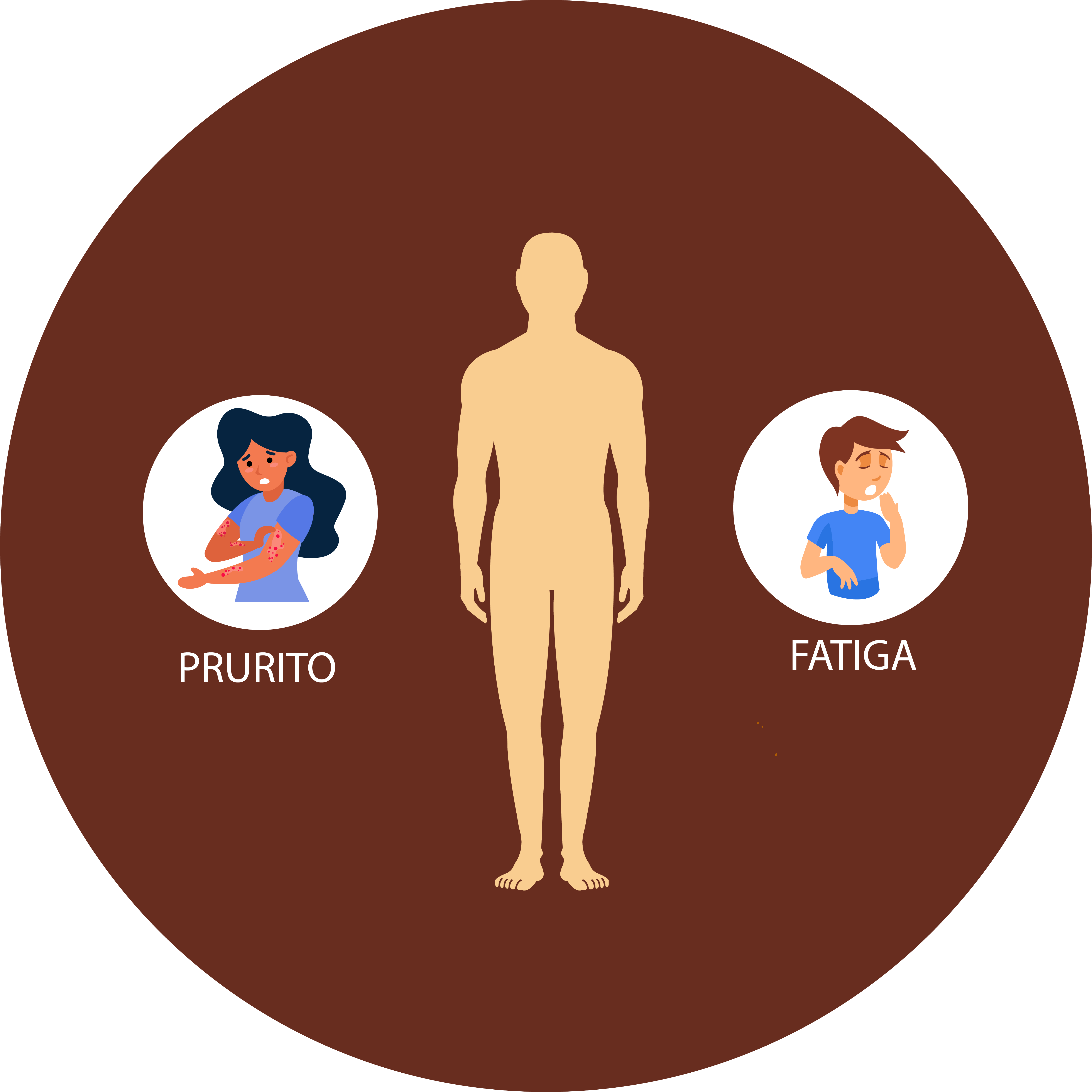Primary Biliary Cholangitis

The liver is an organ that enables us to digest food and remove harmful substances from the body. The liver makes and secretes bile for that purpose. This greenish yellow fluid is stored in the gallbladder. Bile flows through the bile ducts that connect the liver to the gallbladder and the small intestine.
Primary biliary cholangitis results from the slow, progressive inflammation and destruction of the liver’s bile ducts . This prevents bile from flowing correctly, causing it to accumulate in the liver, with inflammation occurring progressively. The inflammation damages the liver’s cells and can lead to the formation of scar tissue (fibrosis). Cirrhosis can also develop in more extreme cases.
Autoimmune disease
Primary biliary cholangitis is considered an autoimmune disease because the immune system gradually and erroneously attacks the healthy cells and tissues that form the liver’s bile ducts.
Prevalence of Primary Biliary Cholangitis
Primary biliary cholangitis is considered a rare disease given its low incidence.It is estimated that there are approximately 9,400 people diagnosed with PBC in Spain, i.e. a prevalence rate of 20.2 cases per 100,000 people. With respect to new diagnoses, it is estimated that there are 1,027 new diagnoses a year in Spain, representing 2.2 new cases per 100,000 people. However, it is suspected that 15% to 25% of people with PBC go undiagnosed in Spain i .
The number of diagnoses have increased in recent years due to more widespread knowledge of the disease and improved diagnostic techniques, making the detection of invisible and asymptomatic cases possible ii iii .
Even though anyone can be affected, 84% of new cases are women, 20% of which are aged under 40 years old I.

Symptoms and diagnosis
During the earlier stages, the disease remains invisible and does not show any symptoms. It is estimated that 60% to 80% of people with primary biliary cholangitis are asymptomatic when diagnosed iv , and detection is based on blood test parameters. This mainly involves the presence of antimitochondrial antibodies (AMA), and higher levels of alkaline phosphatase (AF), gamma-glutamyl transpeptidase (GGT), or cholesterol I.
PBC symptoms can vary to some extent and they occur among patients in advanced stages of the disease. The main symptoms include:
- Pruritus, itchy skin. Occurs in approximately 1 of every 3 primary biliary cholangitis cases.
- Fatigue: this symptom is estimated to occur among 47% of people with PBC on average.
The progression of primary biliary cholangitis or associated diseases tends to lead to people developing comorbid conditions five years after being diagnosed. Cirrhosis occurs during the most advanced stage of PBC.
The diagnostic techniques that enable PBC detection are:
- Blood test parameters.
- Imaging techniques, mainly abdominal ultrasound.
- A liver biopsy.
Progression and follow up
The asymptomatic phase can last for over 10 years and is characterised by the gradual progression of the disease . However, the disease tends to progress more quickly once symptoms occur v , affecting the patient’s prognosis (symptomatic patients are estimated to have an average survival of 4 to 8 yearsV), thus the importance of diagnosing in time to slow down the progression of PBC.
Primary Care tends to be involved during the initial suspicion of PBC,
before subsequently referring to specialists. The time to referral can vary,
but on average it is nine months for asymptomatic patients and five months for symptomatic patients.

On confirmation of the diagnosis, a specialist needs to provide follow up, evaluating the disease’s progression, liver function, treatment effectiveness, or the presence of the more common comorbid conditions associated with the disease. During the asymptomatic phase, the frequency of this follow up can be every six months, becoming more frequent as symptoms and comorbid conditions develop or the disease progresses.
Treatment and prognosis of primary biliary cholangitis
Currently the main treatment lines focus on slowing down disease progression and treating PBC associated complications or symptoms. Approximately 95% of people are treated with ursodeoxycholic acid (UDCA), although 30% of patients show an insufficient response and 5% are intolerant vi. Liver transplant is the only option for cases in the most advanced phase of the disease. The average time of survival without requiring a transplant after diagnosis is estimated to be 28 years.
Left untreated, the disease progresses, causing cirrhosis to develop, with patient quality of life worsening. The prognosis for the disease has now improved due to early diagnosis enabling patients to receive appropriate treatment during the initial stages of the disease, slowing down its progression . The disease’s main prognostic factors are:
- The diagnostic phase.
- The disease stage.
- The patient’s age.
- The disease’s progression.
- The treatment lines used.
- A patient’s response to the treatments and their efficaciousness.
- The presence of other diseases.
- The development of comorbid conditions.
i Parés, Albert & Albillos, Agustín & Andrade, Raúl & Berenguer, Marina & Crespo, Javier & Romero-Gomez, Manuel & Vergara, Mercè & Vendrell, Belén & Gil, Alicia. (2018). Primary biliary cholangitis in Spain. Results of a Delphi study of epidemiology, diagnosis, follow-up and treatment. Revista espanola de enfermedades digestivas : organo oficial de la Sociedad Espanola de Patologia Digestiva. 110. 10.17235/reed.2018.5665/2018.
ii Corpechot C, Chrétien Y, Chazouillères O, et al. Demographic, lifestyle, medical and familial factors associated with primary biliary cirrhosis. J Hepatol 2010;53(1):162-9. DOI: 10.1016/j.jhep.2010.02.019
iii Orphanet Report Series. Prevalencia de las enfermedades raras: datos bibliográficos enfermedades listadas por orden de prevalencia o inciden- cia decreciente o por número de casos publicados. Citado 12 diciembre 2016. Disponible en: http://www.orpha.net/orphacom/
iv Kurtovic J, Riordan SM, Williams R. The natural history of asymptomatic primary biliary cirrhosis. QJM 2005;98(5):331-6. A DOI: 10.1093/qjmed/hci058
v Lindor KD, Gershwin ME, Poupon R, et al. Primary biliary cirrhosis. Hepato- logy 2009;50(1):291-308. DOI: 10.1002/hep.22906
vi Parés A. Treatment of primary biliary cirrhosis: is there more to offer than ursodeoxycholic acid? Clin Liver Dis 2014;3(2):29-33.
vii Bowlus CL, Gershwin ME. The diagnosis of primary biliary cirrhosis. Au- toimmun Rev 2014;13(4-5):441-4. DOI: 10.1016/j.autrev.2014.01.041

